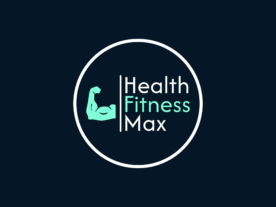Bench Press vs. Push-Ups: Which Exercise Is Right for Your Fitness Goals?
Alright, fitness enthusiasts, let’s dive into the ultimate showdown between two power-packed exercises: the classic bench press and the versatile push-up. These exercises have long been the go-to for building upper body strength, each offering unique benefits. Whether you’re a seasoned gym-goer or just starting your fitness journey, understanding the advantages of these exercises can help you achieve your fitness goals more effectively.
Bench Press: Pumping Iron Like a Pro
Best For:
- Experienced Lifters: Ideal for those familiar with weight training and looking to build serious upper body strength.
- Muscle Mass Gains: Perfect for increasing muscle size, particularly in the chest, shoulders, and triceps.
- Strength Progression: Great for individuals who enjoy challenging themselves with heavier weights and setting new personal records (PRs).
Advantages:
- Targeted Muscle Development: Allows precise focus on specific muscles by adjusting weight, leading to significant muscle hypertrophy.
- Progressive Overload: Enables the gradual increase of weight, crucial for continuous strength and muscle gains.
- Correcting Imbalances: Helps even out muscle imbalances, particularly with unilateral exercises like dumbbell presses.
Disadvantages:
- Requires Gym Equipment: A bench and weights are necessary, limiting the ability to perform this exercise outside of a gym setting.
- Risk of Injury: Proper form is critical to avoid injuries like shoulder strain or lower back issues.
Sample Workout Routine:
- Warm-Up: 5-10 minutes of light cardio and dynamic stretches.
- Bench Press: 4 sets of 8-10 reps, gradually increasing the weight.
- Incline Bench Press: 3 sets of 8-10 reps, focusing on the upper chest.
- Dumbbell Flyes: 3 sets of 12 reps to isolate and stretch the chest muscles.
- Tricep Dips: 3 sets to failure, emphasizing triceps activation.
Push-Ups: The Bodyweight Champion
Best For:
- Beginners: Ideal for those new to strength training, offering a great introduction to upper body workouts.
- Home Workouts: Perfect for those who prefer working out at home or on the go, as no equipment is needed.
- Functional Strength Enthusiasts: Excellent for building strength that translates into daily activities, involving multiple muscle groups and core stability.
Advantages:
- No Equipment Needed: Can be performed anywhere, making it a versatile exercise.
- Core Engagement: Push-ups not only target the upper body but also engage the core for improved stability and balance.
- Variety: There are countless push-up variations to keep workouts challenging and interesting, from standard to plyometric push-ups.
Disadvantages:
- Limited Resistance: Progressing beyond bodyweight can be challenging without adding resistance bands or weights.
- Form-Dependent: Maintaining proper form is crucial to avoid injuries and ensure effectiveness.
Sample Workout Routine:
- Warm-Up: 5 minutes of jumping jacks and arm circles.
- Standard Push-Ups: 4 sets of 15-20 reps.
- Decline Push-Ups: 3 sets of 12-15 reps, targeting the upper chest.
- Diamond Push-Ups: 3 sets of 10-12 reps, focusing on triceps.
- Plank Hold: 1-2 minutes to strengthen the core.
Choosing the Right Exercise for Your Goals
Whether you’re focused on building muscle or improving functional strength, both exercises offer unique benefits:
- For Muscle Mass: The bench press is ideal for those seeking significant muscle hypertrophy, particularly in the chest and shoulders.
- For Functional Strength: Push-ups excel at building practical, everyday strength with a strong emphasis on core stability.
- For Convenience: Push-ups are unbeatable in terms of accessibility and versatility, making them perfect for at-home or travel workouts.
Integrating Both Exercises for Maximum Gains
To achieve the best results, incorporate both the bench press and push-ups into your routine:
- Variety: Alternate between bench press sessions and push-up circuits to keep muscles guessing and prevent plateaus.
- Progressive Overload: Use the bench press for heavier weight training and push-ups to add intensity through variations like incline, decline, or explosive push-ups.
Final Thoughts
Whether you’re lifting heavy at the gym or doing push-ups at home, remember that consistency and proper form are the keys to success. Incorporate both exercises into your fitness routine to maximize your results, and enjoy the journey to a stronger, more resilient you.
For More Personalized Tips and Workout Plans
Check out our related articles on Strength Training Basics and Home Workout Essentials at Health Fitness Max.

